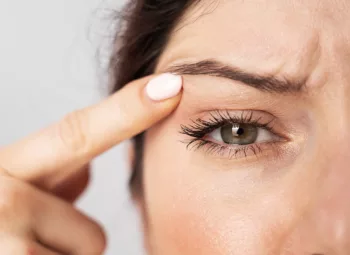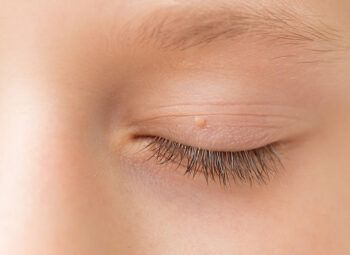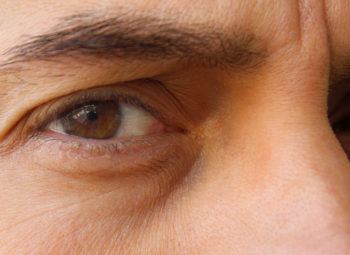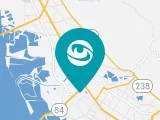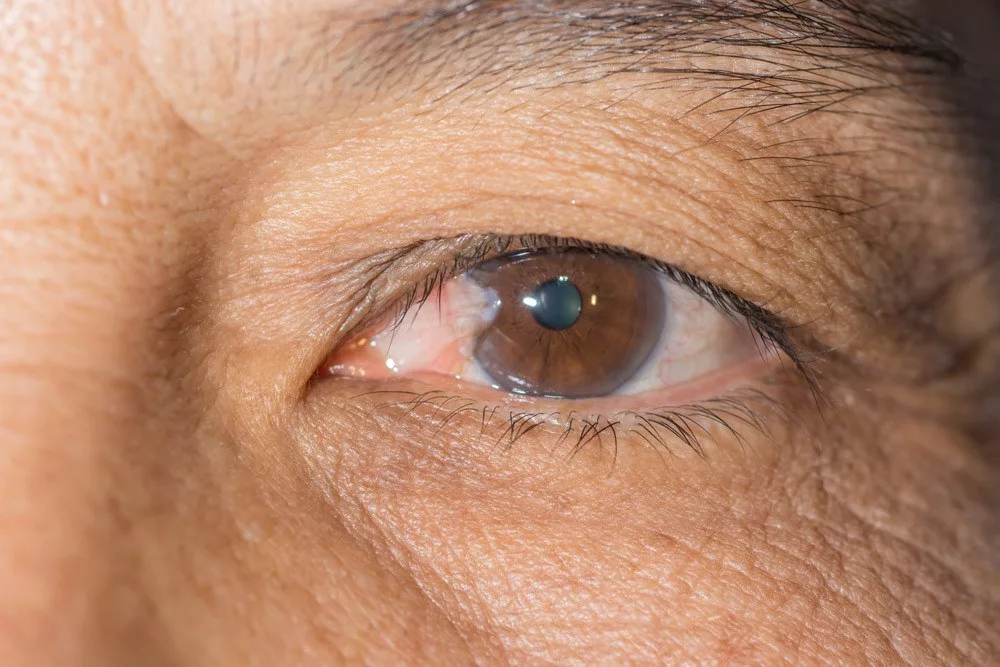
What is a Pterygium?
Pterygium, also known as Surfer’s Eye, is a benign eye growth that covers the white part of the eye (also known as the sclera). This small, elevated eye web typically starts at the conjunctiva: the membrane that lines the eyelid and covers the white of the eye. It can spread from there to the cornea and potentially alter the shape or cover the cornea.
A pterygium growth can be a number of different colors and sizes. It can be pink, white, gray, red, yellow or even colorless.. A Pterygium can be very small or large enough to affect vision. It is also possible to have one or more growths at once (pterygia).
Concerned you may have a pterygium?
Schedule a free no-stitch ptergygium/autograft surgery consultation with Dr. Tandon.
What Are The Symptoms and Causes of Pterygium?
Symptoms of Pterygium include:
- A wing-like and raised growth or appearance on the eye. Most commonly found on the inner portion of the eye but can develop on the other side as well.
- Eye irritation caused by the growth.
- Vision affected by the growth. A pterygium can cause vision to decrease or become blurry.
- Foreign body sensation.
- Redness of the eye.
A pterygium can potentially be caused by a number of factors. The most common cause is ultraviolet radiation and sunlight exposure over time. A pterygium can also occur from chronic dry eye disease or chronic exposure to dust and wind conditions. Pterygium is commonly found in individuals who spend a lot of time in the sun or live in dry, windy, smoky, dusty or sandy climates.
How is a Pterygium Diagnosed and Treated?
If you are experiencing the symptoms of pterygium you should schedule an eye exam with your ophthalmologist. They will be able to direct you on the proper course of treatment. In most cases, a routine eye exam reveals pterygium in asymptomatic individuals or in patients who present with cosmetic concern about a tissue “growing over the eye.”
People with pterygium should be seen by an ophthalmologist annually, so that encroachment on the pupil can be recognized and treated before interference with vision. External slit lamp measurements or photography can assist your eye doctor in following the progression of the pterygium.
Pterygium treatment will primarily depend on the size and severity of the growth, where it is growing within the eye, and what effect the growth is having on the eye. A small pterygium is best handled with a conservative approach and could be prescribed eye drops or artificial tears to relieve the sensation of a foreign body and to relieve dryness or inflammation.
In some cases, your ophthalmologist may prescribe surgical excision of the pterygium. Although most pterygia are harmless and can be left alone safely; they are surgically removed for the following reasons:
- Discomfort: If a pterygium is causing excessive irritation due to dryness/inflammation or a persistent foreign body sensation.
- Vision: If a pterygium is obstructing vision.
- Cosmetic: If a pterygium is unsightly or cosmetically unappealing.
If your ophthalmologist suggests surgical removal of pterygium is the best course of action for you, the good news is that it is a relatively simple procedure. The surgery is performed as an outpatient procedure under local or topical anesthesia. You will be able to go home the same day with the affected eye patched overnight. Most patients are able to return to work or daily activities within a day or two.
Postoperative care may also include eye drops or ointments applied several times a day. The healing process can take many weeks to be completely healed. Unfortunately, even with modern techniques the recurrence rate of a pterygium can be as high as 30 to 40 percent.
No-Stitch Surgery For Pterygium
NeoVision Eye Center is proud to offer a new “no-stitch” treatment for the surgical removal of pterygium for our Bay Area patients. No-Stitch Ptergygium/Autograft Surgery is a technique which allows the abnormal corneal tissue to be removed and then replaced with a thin graft of normal tissue. This will allow the eye to heal and return to a normal appearance within two to three weeks.
If you are experiencing the symptoms a pterygium or would like to learn more about its treatment, the trusted team of experts at NeoVision Eye Center in Mountain View and Union City are here to help. Schedule a free consultation with NeoVision Eye Center today.
Are You Experiencing Pterygium Symptoms?
Dr. Shobha Tandon and her staff are here to answer any questions or concerns you may have about taking the next step. Fill out the form below to schedule an eye exam to confirm the diagnosis of pterygium and discuss possible treatment options.
"*" indicates required fields

